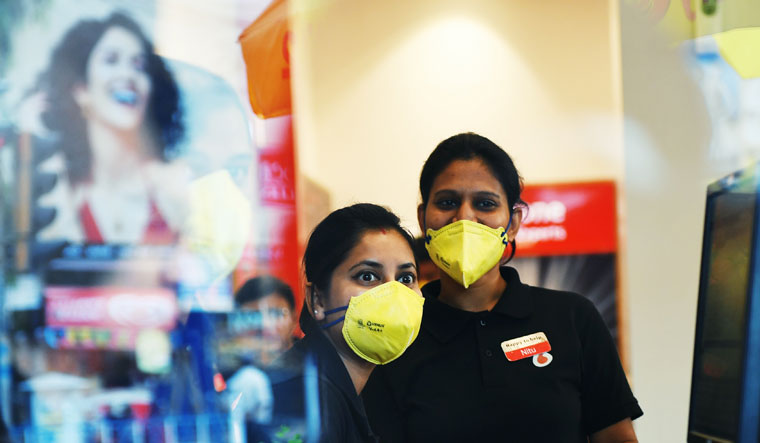The novel coronavirus might spread through the air via normal breathing and speaking, a top US scientist said on Friday. While studies and researches have still been inconclusive, the warning from the scientist signifies the importance of using masks and other preventive measures.
Anthony Fauci, head of infectious diseases at the National Institutes of Health, told Fox News the guidance on masks would be changed "because of some recent information that the virus can actually be spread even when people just speak, as opposed to coughing and sneezing." Currently, the official advice is that only sick people need to cover their faces, as well as those caring for them at home.
Fauci's statement comes a day after the National Academy of Sciences (NAS) in the US sent a letter to the White House summarising its recent research on the subject. Though current studies aren’t conclusive, “the results of available studies are consistent with aerosolization of virus from normal breathing,” Harvey Fineberg, who heads a standing committee on Emerging Infectious Diseases and 21st Century Health Threats, wrote in a 1 April letter to Kelvin Droegemeier, head of the White House Office of Science and Technology Policy.
In short, this means that the dreaded novel coronavirus might even spread through the air—not just through the large droplets emitted in a cough or sneeze. So far, evidence only suggested that the primary pathway of transmission of the highly contagious coronavirus is through respiratory droplets, about one millimeter in diameter, expelled by sick people or asymptomatic people when they sneeze or cough. These droplets would quickly fall to the ground up to even a meter away.
However, if the latest warnings by the researchers are to be believed, the virus can be suspended in the ultrafine mist we expel when we exhale--in other words an aerosol. It becomes much harder to prevent its spread, which in turn is an argument in favor of everyone covering their faces.
It is not just NAS who has flagged off the issue of the disease spreading through aerosols. A group of scientists who studied biological aerosols at the University of Nebraska Medical Center were able to identify genomes of the coronavirus from more than half of the aerosol samples that they took from the isolation rooms of the COVID-19 patients. "It was fairly ubiquitous, but the concentration was fairly low," said one of the researchers. Nevertheless, they are still far away from concluding that the genetic material of the viable virus could potentially make someone sick.
A recent NIH funded study published in the New England Journal of Medicine found that the SARS-CoV-2 virus could become an aerosol and remain airborne for up to three hours. This triggered a debate even as critics said the findings were overblown because the team behind the study used a medical device called a nebulizer to deliberately create a viral mist and argued this would not occur naturally.
The NAS scientists also pointed to two other studies--both not yet peer reviewed--from Hong Kong and from mainland China. The Hong Kong researchers collected viral samples from patients with the coronavirus and other viral respiratory illnesses, and gave some of the patients face masks.
The masks reduced the detection of both droplets and aerosols for coronavirus patients.
The Chinese paper on the other hand raised concerns that personal protective gear used by healthcare workers could itself be a source of airborne virus. The team studied hospitals in Wuhan and found that there were two major areas where the virus was aerosolized: the bathrooms of patients, and rooms where medical staff removed their protective gear.
This may be because doffing protective gear causes the particles to get re-suspended in the air. Even if these particles are not of breathable size, they could settle on people's hands and bodies, the NAS panel said.
So far, the World Health Organization (WHO) has been more cautious on the airborne threat. In an analysis published on March 29, it wrote that aerosol transmission was only known to occur during particular medical treatments that required assisted breathing.
Meanwhile, more than 1.3 million people around the world have been infected by the respiratory disease. Of this, more than 60,000 have succumbed to the rapidly spreading virus while around 2.3 lakh have recovered.
(With inputs from AFP)


